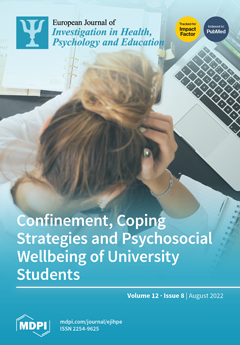To tailor and predict the outcomes of smoking cessation treatment, it is essential to identify the nature of motivation, as it is the basis for long-term change in healthy behaviors according to self-determination theory (SDT). The purpose of this study is to examine
[...] Read more.
To tailor and predict the outcomes of smoking cessation treatment, it is essential to identify the nature of motivation, as it is the basis for long-term change in healthy behaviors according to self-determination theory (SDT). The purpose of this study is to examine the psychometric properties of the French Smoking Cessation Motivation Scale (F-SCMS). The factorial structure and the psychometric properties were assessed with French-speaking users who had started a 9-step preparation program through a mobile app for smoking cessation (
n = 13,044). The results of the present study confirmed content validity (CFI = 0.905, SRMR = 0.045, RMSEA = 0.087) and good internal consistency (α = 0.86, ωh = 0.7, ωt = 0.89) with CFA. The convergent validity was very small, but there were highly significant positive correlations between the willingness and readiness to quit with integrated and intrinsic subscales (rs = 0.25–0.37,
p < 0.001). The amotivation subscale significantly had no correlation with any degree of willingness (r = 0.01,
p < 0.001), ability (r = 0.01,
p < 0.001), and readiness to quit (r = 0.02,
p < 0.001). This scale facilitates future research regarding the nature of motivation to quit smoking in the French-speaking population.
Full article






